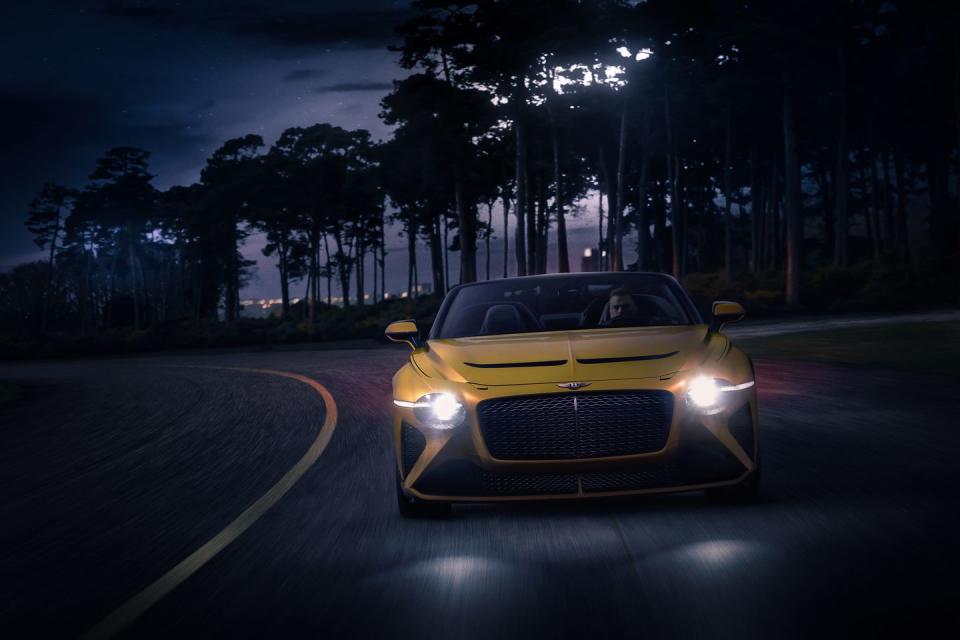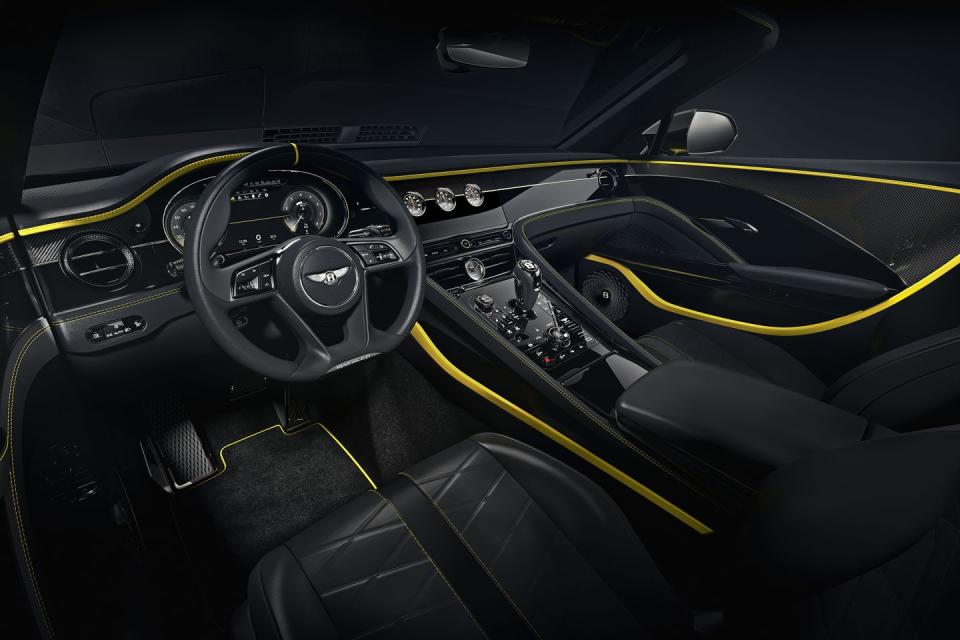Bentley Bacalar Is All About Exclusivity

Exclusivity was never an issue in the early years of the automobile. Those who were wealthy enough to afford cars before the era of mass manufacturing would normally commission their favored style of bodywork from the same coachbuilders who had previously made horse-drawn carriages. It was a largely separate—and more dignified—trade to the grubby business of making frames, engines, and axles.
Coachbuilding survived for an impressively long time after the arrival of production line-built cars, but it became increasingly harder and more expensive as vehicles got more and more complex. But Bentley is now bringing back something very similar. Previewed by the Bacalar, Bentley's in-house Mulliner division is offering a radically different, limited-edition car built on the same underpinnings as the existing Continental GT convertible.
This approach is not entirely new—Lamborghini seems to launch two or three unobtanium-grade special models a year—but it's less common in the ultra-luxury segment. Bentley announced its plan to build a limited run of a dozen Bacalars earlier this year. The debut was originally scheduled for the Geneva auto show but, following its cancellation, the reveal was subsequently held online. At the same time, it also confirmed that all the cars had already been sold, despite their roughly $2 million price tag and the fact that Bacalars could only be imported to the United States under restrictive show-and-display regulations.

None of the customer Bacalars has been built yet, let alone a baseline prototype for honing the mechanical package. But we were given the chance to experience the concept that was meant to be on the stand at Geneva, with an exclusive drive on the Goodwood Circuit in the United Kingdom.
The combination of a seven-figure show car with zero weather protection and what is meant to be the height of the British summer produces an entirely predictable outcome: near-torrential rain. Not ideal conditions for a 650-hp car on an infamously crashable, high-speed racetrack, although it soon became clear that the show car is not built for speed, whatever the conditions.
The Bacalar's damp but beautifully finished interior quickly proves to be a theatrical set. Trying to close the windows reveals that the switches don't work, and the milled-aluminum temperature controls spin without altering either the display on the digital readout or the cabin's airflow; there is no actual climate-control system behind the dashboard. The hands of the clock and the trio of dials that sit on what should be a rotating panel atop the dashboard are frozen in place. The digital instrument display works, but it only plays a looped video to represent rising speed and revs. This means we do get to enjoy the unlikely experience of turning into Goodwood's tricky first Madgwick corner at an indicated 170 mph, but it's not one that reflects reality. On the plus side, at least the windshield wipers work.

Once rolling, the Bacalar's windshield actually offers an impressive amount of weather protection. Bentley claims that the finished car, which should weigh about 220 pounds less than the softtop Continental GT, will be the fastest open-roof road car in its history: zero to 60 mph in a conservative 3.5 seconds and a "better than 200 mph" top speed. Neither figure can be confirmed in the show car at Goodwood, but gentler progress is more in keeping with how owners are likely to enjoy the Bacalar—at speeds that keep its cabin reasonably calm so as to better enjoy the wuffling soundtrack and effortless punch of its mighty twin-turbo 6.0-liter W-12. The Conti's eight-speed dual-clutch automatic transmission pairs well with the car's split mission, offering both snappy responses and almost torque converter-like smoothness at lower revs.
Not that you'd want to speed past all the jealous glances. The Bacalar looks stunning, an auto show concept that a lucky group of affluent customers will actually be able to buy. Despite using the same platform as the Continental GT convertible, which starts at $228,025, Mulliner's design team has changed every exterior panel. The new bodywork employs both aluminum (for the rear deck) and carbon fiber (doors and front fenders). The only carryover parts from the Continental are the windshield and the door handles, which incorporate the keyless entry system. Bentley's head of color and trim, Maria Mulder, says that at least one customer has specified the show car's Flame Yellow hue, which comes alive under gray skies and nicely accents the car's unique 22-inch wheels.

Much less inside the cabin has been changed, as it is far more difficult to redesign and relocate switchgear than it is body panels. But almost every surface has been covered in exotic and expensive materials. The show car's dashboard is made from 5000-year-old petrified river wood recovered from a peat bog, and therefore presumably able to cope with another soaking. We were more concerned about both the quilted leather seats (each with 148,000 individual stiches) and the ultra-fine wool-cloth dash panels. But Mulder says they are actually pretty tough. Bentley has to meet the Volkswagen Group's standards for trim durability and (in open-top models) short-term water resistance.
When we speak to Mulliner boss Tim Hannig after our drive, he admits the decision to build only a dozen Bacalars was a deliberately cautious one. This car is intended to be both a proof of Bentley's ability to make substantive changes to its existing models and also to gauge the market for them, although he insists that production numbers for future Mulliner models will never make them commonplace. "When you increase volumes, people's excitement goes away," he said. "I don't think we'll ever get to 150."
But the Bacalar will be followed by other limited-run specials. "We're absolutely not planning to do one and then stop," Hannig said. "This is a very serious start into a forgotten niche of the market."
You Might Also Like

 Yahoo Autos
Yahoo Autos 